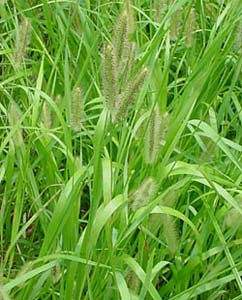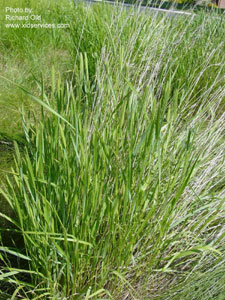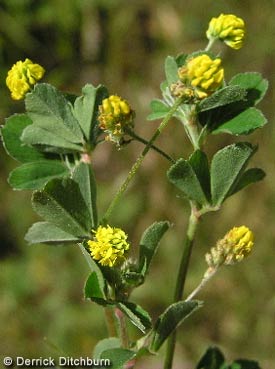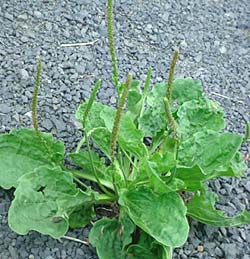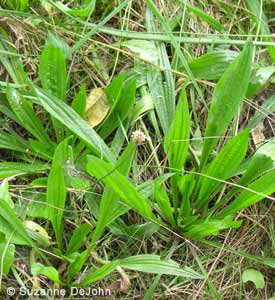این و دوتای بالایی علف هرز اند
Dallisgrass
Dallisgrass (Paspalum dilatatum) is a pasture grass from South America that has become an invasive nuisance in the southern half of North America. Seedlings that emerge in spring resemble crabgrass but are much more difficult to pull because of their strong roots. Apply a corn gluten herbicide in spring to reduce seed germination. In summer, use a sharp knife to slice a circle around plants before digging them out. Promptly repair the disturbed area by planting a plug or two taken from the edges of your lawn. This coarse grass is most problematic in stressed Bermuda or zoysia lawns
Weed Control Techniques
Pulling. Most young weeds can be pulled from the soil. They will slide out most easily if you pull them when the soil is wet. Getting the root up is crucial, so think of the main stem as the root's handle, and grasp it as close to the soil line as you can. If you find that the weeds are breaking off at the crown as you pull, slip a kitchen fork, dandelion weeder, or similar tool under the weed, and pry and twist as you pull it up. Weeds that have taproots, such as dandelion and plantain, usually must be pried out. A flexible pair of waterproof gloves will keep your hands comfortable as you weed, and it's good to have a nice sitting pad, too. Let pulled weeds bake in the sun for a day or so before composting them. If pulled weeds are holding mature seeds, compost them separately in a hot, moist pile before using this compost in the garden.
Corn gluten herbicides. Powdered herbicides made from corn gluten keep crabgrass and other weed seeds from germinating and growing. They are typically spread on established lawns, but they also can be used in gardens where no seeds will be planted, such as in perennial beds. As the corn gluten degrades, it provides a small amount of nitrogen to the soil. Crabgrass begins to germinate at about the time that azaleas, dogwoods, and forsythias bloom, so spread corn gluten at that time for best results. Application procedures vary with the particular product; be sure to read and follow the directions on the label. Do not use corn gluten in newly seeded lawns, or in garden beds where you plan to sow seeds.
Digging. Weeds that regrow from persistent roots must be dug. Use a spade or digging fork to dig spreading perennials, such as bindweed, Canada thistle, and quackgrass. Start digging a foot away from the plant's center to loosen the soil. Then lift the weed from beneath, which reduces how many root pieces are likely to break off and regrow. Dandelion, dock, and other weeds that grow from persistent taproots can be dug the same way, or you can use a special fork-like tool called a dandelion weeder to pry them up. Dig very large taproots that are difficult to pry loose. In lawns and other places where digging dandelions is not practical, use a sharp knife to slice off the leaves and the top inch or two of taproot at a diagonal angle. Some weeds that are easily pulled when the soil is moist must be dug from dry soil.






 جواب بصورت نقل قول
جواب بصورت نقل قول
